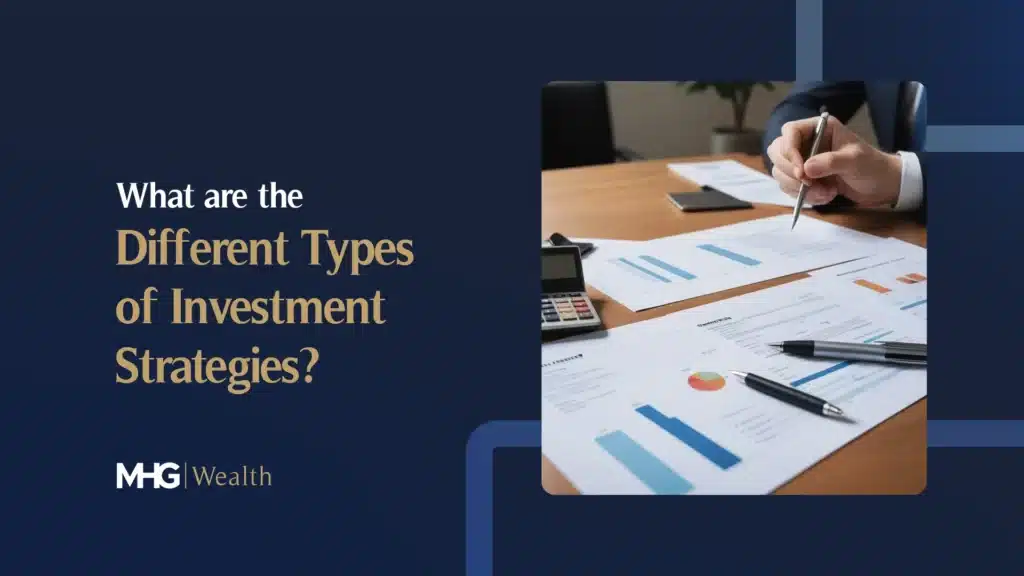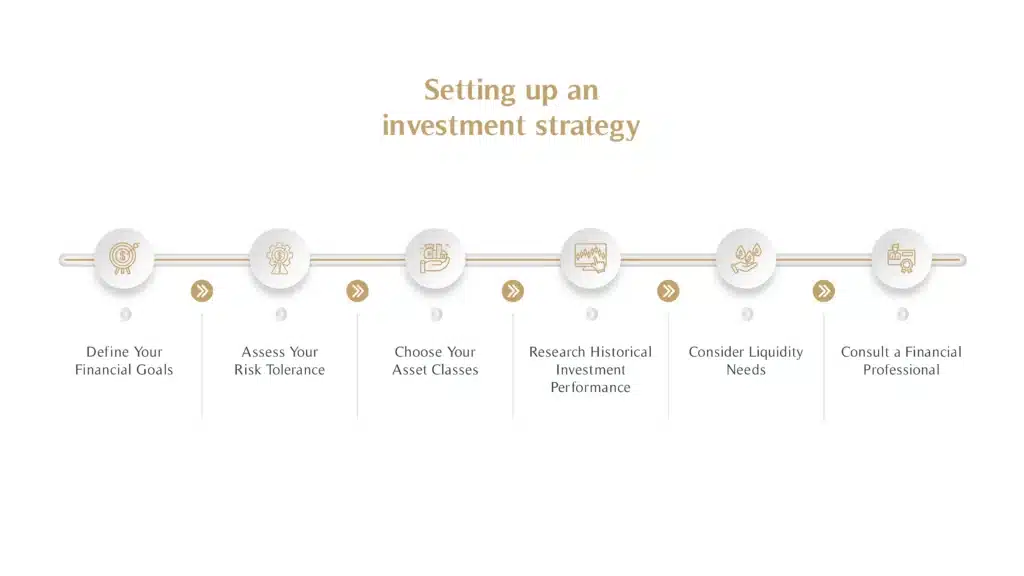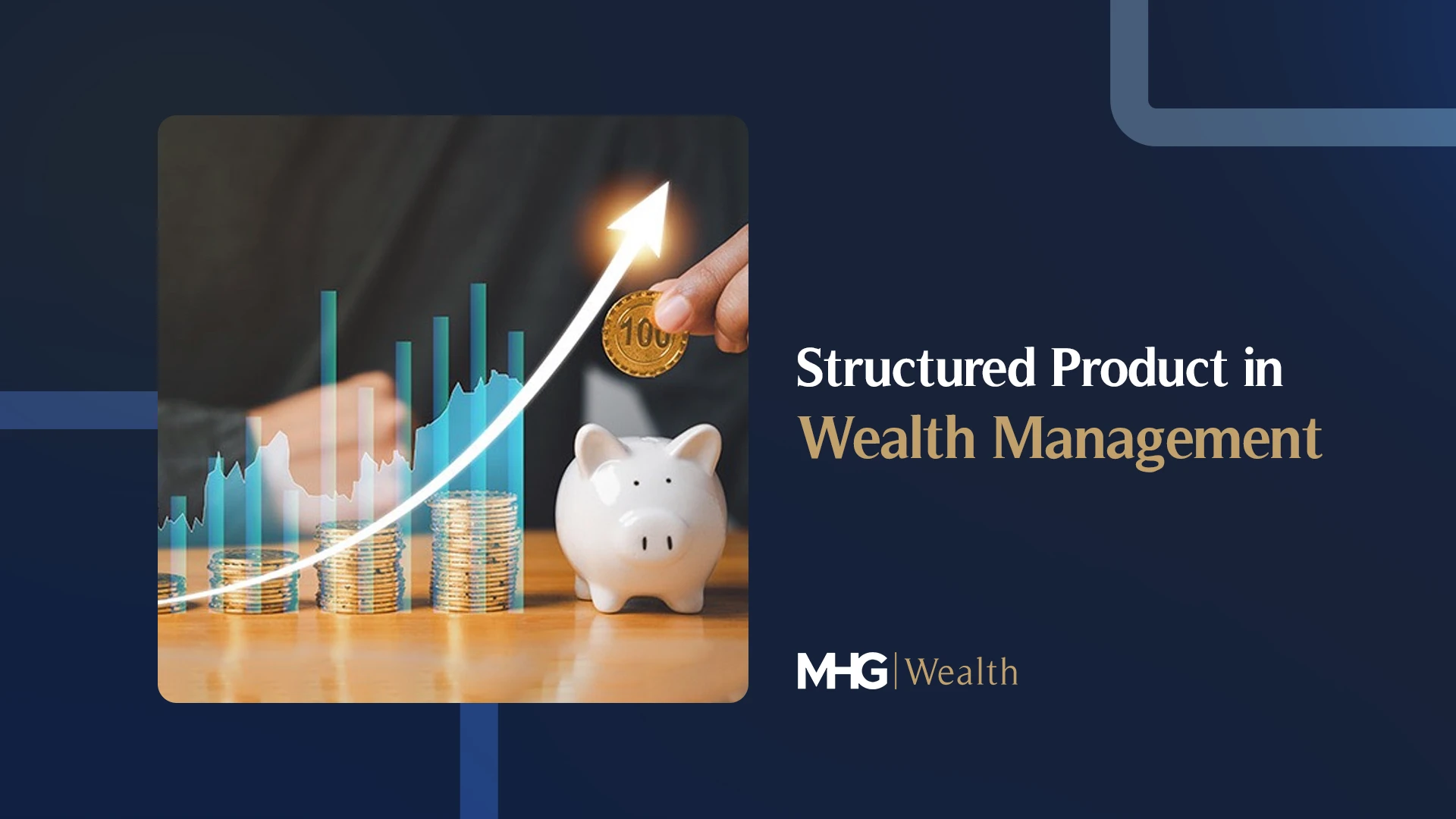If you are looking to invest, you might be wondering which investment strategy will get you the best returns. Whether you’re starting with £500 or looking to maximise £100,000 sitting idle in your savings account, there are dozens of ways to get your money to work for you.
But which ones are right for you?
Having a strategy is essential if you want to see the best returns and want to minimise unpleasant surprises along the way. If you invest without a clear plan, you are far more susceptible to taking emotionally-driven risks and incurring avoidable losses.
What is an investment strategy?
An investment strategy is a plan that outlines what you will invest in, how much you will invest, and when you can expect to exit your investments.
There is no one-size-fits-all when it comes to finding the right investment strategy. Different investors have different goals and interests, and knowing what strategy is right for you depends on a range of factors.
These factors include:
- Age. Older investors tend to be more cautious as they approach retirement, while younger investors often take on more risk.
- Dependencies. Do you have family or children relying on you financially?
- Goals. What are you investing for: retirement, a home, education?
- Lifestyle. How much disposable income do you aspire to have?
- Financial situation. How much can you afford to invest?
- Expected returns. How long can you wait to see a return on your investment?
Understanding Risk
Before we look into the different investment strategies, it’s essential to understand the risks that come with investing.
Every investment carries risk, whether it’s a fixed-income producing bond or an equity venture. The golden rule is that you should never invest more than you can afford to lose, regardless of how much you plan to invest. Before you commit, it’s important to ensure that your living and personal expenses are well taken care of, so any losses are manageable.
The key challenge with investing is striking a balance between risk and reward.
High-risk investments typically produce the highest returns, but they also often bring an increased risk of serious financial loss. Lower-risk investments on the other hand produce lower returns, but they are usually more stable and predictable. A good investment strategy will always strike a balance between the two, taking into account risk tolerance and opportunity.
Types of investment strategies
Let’s take a look at 5 common investment strategies:
Growth Investing
Growth investing involves investing in companies that are expected to grow at a faster rate than the market average. Growth stocks tend to be in innovative fields like tech, AI, and renewable energy – all of which are hinged on future demand. Compared with other investment methods, growth investing requires a good nose for broader business trends in order to accurately predict what companies will soar. A smart growth investment would have been investing in Amazon in the 2000s, or in Tesla in the early 2010s.
Growth investing can bring high returns and significant capital appreciation, but it’s a long-game that carries increased risk. This is because investors effectively bet on the future performance of a company, rather than its current balance sheet. Growth stock investors are also unlikely to receive dividends, as many high growth companies reinvest their profits into the business for further expansion.
This is a suitable investment method for long-term investors who can afford to hold on to their investments until the company realises its full potential.
Value Investing
Value investing involves buying stocks and assets you believe to be undervalued. It helps to think of value investing as buying designer clothes at outlet prices, or finding a hidden gem at a flea market. This investment strategy is based on the assumption that the current market price does not accurately reflect the true value of the company. A good example of value investing is buying into a company that has recently faced a surface-level setback (a scandal, for instance), which has caused its stock price to slide despite its balance sheet remaining healthy.
Like growth investing, value investing is a long-term game that requires patience. It is however usually less risky than growth investing, because you buy the stock while it’s at a comparatively low price.
This is a suitable strategy for conservative investors who prefer to invest in companies that already have solid foundations.
Dollar Cost Averaging (DCA)
Don’t be confused by the name here, as this strategy applies in sterling, euros, yen and every other currency too. Dollar-cost averaging is an investment strategy that involves putting a fixed amount of money into a given investment at regular, specified intervals. This could mean putting £500 every month into a stock or fund, regardless of price and market conditions. It’s an effective way to reduce emotional decision making, because you remove the stress of waiting for the perfect time to invest. It also mitigates the impact of price swings, because your entry price averages out over a long period of time, particularly if you’re investing in a volatile asset like cryptocurrency.
The downside of dollar-cost averaging is that it can increase transaction costs if you’re buying little and often, rather than putting down one large payment.
This strategy is a suitable choice for most investors, but it’s especially appealing to those who want a simple strategy that manages risk effectively.
Passive Investing
A passive investment strategy is one that involves minimal active input from the investor. The goal here is to capture a diverse, broad scope of the market in a way that requires little day-to-day management. This might involve investing in a fund like an index tracker, which is essentially a basket of different stocks designed to track the performance of a specific market index or sector.
Passive investment opportunities are incredibly broad and can range from litigation funding to real estate crowdfunding. While passive opportunities tend to be less liquid than active investments, they help spread risk via diversification. Read our guide for further information on the differences between active vs passive investing styles.
This strategy is suitable for risk-averse investors who wish to take a more hands-off approach in order to grow their money.
Active Trading
Active trading involves buying and selling assets such as stocks, bonds, or cryptocurrencies, on a frequent basis – sometimes multiple times in a day (i.e. day trading). It’s a great way to turn over short-term profits, but it requires deep market insight and extensive financial analysis skills.
Active trading is more stressful than passive trading because it requires constant market monitoring. It is also high-risk, as it requires quick decision making which can be easily impacted by panic or excitement.
This is a suitable strategy for investors who are well-versed in financial analysis and have a high risk tolerance.
Real-world example
A good investment strategy will not rely exclusively on one technique. Instead, it will harness multiple methods, balancing risk with reward.
Your strategy must be unique to your circumstance and goals.
For instance, if your aim is to turn a $200,000 investment into $300,000 within two years, a wise approach would involve diversifying across high-growth stocks, income-generating bonds, and alternative investments such as gold or real estate. This strategy spreads risk while targeting growth.
Alternatively, if you’re looking to save up a healthy retirement balance over a 30 year period, a safe strategy might use a consistent dollar-cost average method to invest in both value and growth stocks, in addition to an alternative asset like oil or real estate. This decreases risk and helps minimise the impact of volatile market swings.
Comparison of investment strategies
When it comes to investing, no single strategy works for everyone. The right approach depends on factors like your financial goals, risk tolerance, and time horizon.
Here’s a breakdown of popular investment strategies to help you decide which suits your needs:
1. Aggressive Strategy
An aggressive investment strategy aims for high returns by taking on higher risks. It often involves allocating significant portions of your portfolio to equities, emerging markets, or innovative industries like AI or biotechnology.
Imagine investing heavily in start-up tech companies. While these stocks may be volatile in the short term, they could offer exponential growth over the long term.
This strategy is suitable for younger investors or those with a higher risk tolerance who can afford to wait for their investments to mature.
2. Conservative Strategy
Conservative strategies focus on wealth protection and stability rather than high returns. Investments typically include government bonds, blue-chip stocks, or dividend-paying funds.
For instance, an investor nearing retirement might allocate a significant portion of their portfolio to stable, income-generating assets to ensure consistent cash flow and preserve capital.
This approach is ideal for risk-averse investors who prioritise security over growth.
3. Growth Investing
Growth investing targets companies expected to grow significantly faster than their peers. These are often found in cutting-edge industries such as renewable energy or technology.
Investing in Tesla during its early days is a classic growth investment. While such stocks rarely pay dividends, they can deliver substantial capital appreciation over time.
This strategy suits long-term investors willing to ride out short-term market fluctuations.
4. Value Investing
Value investing is all about finding stocks trading below their intrinsic value. This strategy requires patience and thorough analysis of a company’s fundamentals.
Suppose a company faces negative press, causing its stock price to drop. A value investor might seize this opportunity, believing the business’s financials remain strong and the stock will rebound.
This is a great option for conservative investors seeking long-term stability and lower entry points.
5. Momentum Investing
Momentum investors ride the wave of market trends, buying assets showing upward momentum and selling them as their performance plateaus.
If a stock’s price surges due to strong earnings reports, momentum investors might capitalise on this upward trend, selling at a profit when the momentum fades.
While this strategy can yield quick profits, it requires active monitoring and comes with higher risks.
6. Dollar-Cost Averaging (DCA)
DCA involves investing a fixed amount of money regularly, regardless of market conditions. This reduces the impact of volatility by averaging out the cost of your investments over time.
Imagine you invest £500 in a mutual fund every month. Some months, the price might be high, and other months it might be low, but your consistent contributions balance out over time.
This is a straightforward, risk-managed approach that works well for most investors.
7. Passive Index Investing
Passive investing focuses on building a diversified portfolio with minimal effort. This is typically achieved through index funds that track market indices.
For instance, investing in an S&P 500 index fund provides exposure to 500 of the largest US companies without needing to pick individual stocks.
This strategy is ideal for risk-averse investors or those with limited time to actively manage their investments.
Each strategy has its strengths and weaknesses, and combining multiple approaches can help you achieve a well-rounded portfolio. For more insights into passive and active strategies, read our detailed article on Active vs Passive Investing.
Setting up an investment strategy
Crafting an investment strategy tailored to your unique goals and circumstances requires careful planning.
Here’s a step-by-step guide to get started:
1. Define Your Financial Goals
Determine what you’re investing for. Are you saving or investing for retirement, buying a home, or building generational wealth? Setting clear, measurable objectives will guide your strategy.
Example: A 30-year-old planning for retirement might aim for a portfolio that grows steadily over the next 35 years, while a parent saving for their child’s university education might prioritise liquidity within 10–15 years.
2. Assess Your Risk Tolerance
Understanding your comfort with risk is crucial. High-risk strategies might offer higher returns, but can you handle the volatility? A financial advisor can help you measure your risk tolerance based on factors like age, income stability, and financial responsibilities.
3. Choose Your Asset Classes
Decide how to allocate your investments across asset classes like stocks, bonds, real estate, and alternative investments. Diversifying your portfolio helps manage risk and maximise returns.
Younger investors might lean towards equities and alternative investments for growth, while older investors might focus on bonds and income-generating assets.
4. Research Historical Investment Performance
Analyse how different assets have performed historically under various market conditions. This helps you set realistic expectations and understand potential risks.
During periods of rising interest rates, bonds typically lose value, while certain commodities or real estate investments may remain stable or even appreciate.
5. Consider Liquidity Needs
Think about how quickly you may need to access your investments. While stocks and bonds are relatively liquid, assets like real estate or private equity may require a longer time horizon.
6. Consult a Financial Professional
Building an investment strategy can be complex. Consulting a financial advisor ensures your plan aligns with your financial goals, risk tolerance, and market conditions.
For example, at MHG Wealth, our advisors tailor investment portfolios to your unique circumstances, helping you mitigate risks while achieving your target performance.
Learn more about alternative investment options by exploring How to Invest in Alternative Investments.
Setting up your strategy isn’t a one-and-done process. Regularly review and adjust your portfolio to stay aligned with your goals and adapt to changing market conditions.
Conclusion
No two investment strategies are the same, which is why many investors turn to a financial advisor to help them formulate a plan that works best for them.
If you would like to learn more about our exclusive passive investment opportunities or speak with an experienced financial advisor, please contact us at MHG Wealth today.






